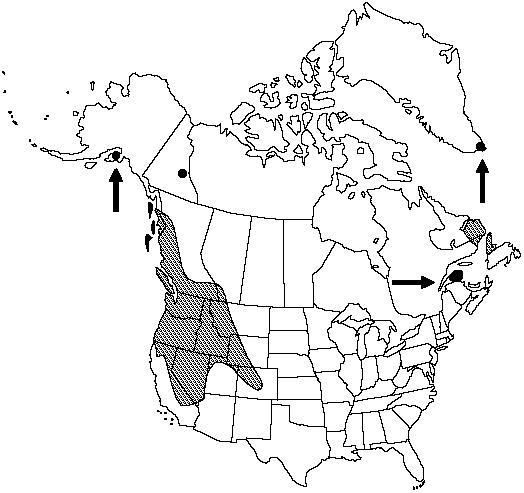Athyrium distentifolium var. americanum
Naturaliste Canad. 93: 272. 1966..
Stems ascending or short-creeping. Petiole straw-colored or redbrown distally, (7–) 10–30 cm, base dark redbrown to black with 2 rows of teeth, swollen; scales at base brown to dark-brown, lanceolate or broadly lanceolate, 13 × 3 (–5) mm. Blade narrowly elliptic or lanceolate, 2–3-pinnate-pinnatifid, 15–55 (–65) × 3–25 cm, moderately narrowed proximally, broadest below middle, apex acuminate. Pinnae short-stalked, narrowly deltate to deltate-oblong, apex acute. Pinnules deeply pinnatifid, segments oblong, crenulate. Rachis, costae, and costules with small, pale-brown scales. Veins pinnate. Sori round to elliptic; indusia absent or very minute, scalelike. 2n = 80.
Habitat: Wet talus slopes, rocky hillsides, alpine meadows
Elevation: 600–3100 m
Distribution

Greenland, Alta., B.C., Nfld. and Labr. (Nfld.), Que., Yukon, Alaska, Calif., Colo., Idaho, Mont., Nev., Oreg., Utah, Wash., Wyo.
Discussion
Athyrium distentifolium var. americanum differs from var. distentifolium of Europe in its more finely dissected leaves with crenulate pinnule-segments, relatively broader pinnae with abruptly larger basal pinnules, and much more rudimentary indusia, if any. Japanese plants are more similar to var. americanum than to var. distentifolium, and they need further study.
Selected References
None.
Lower Taxa
No values specified."timeslengthofblade" is not declared as a valid unit of measurement for this property.